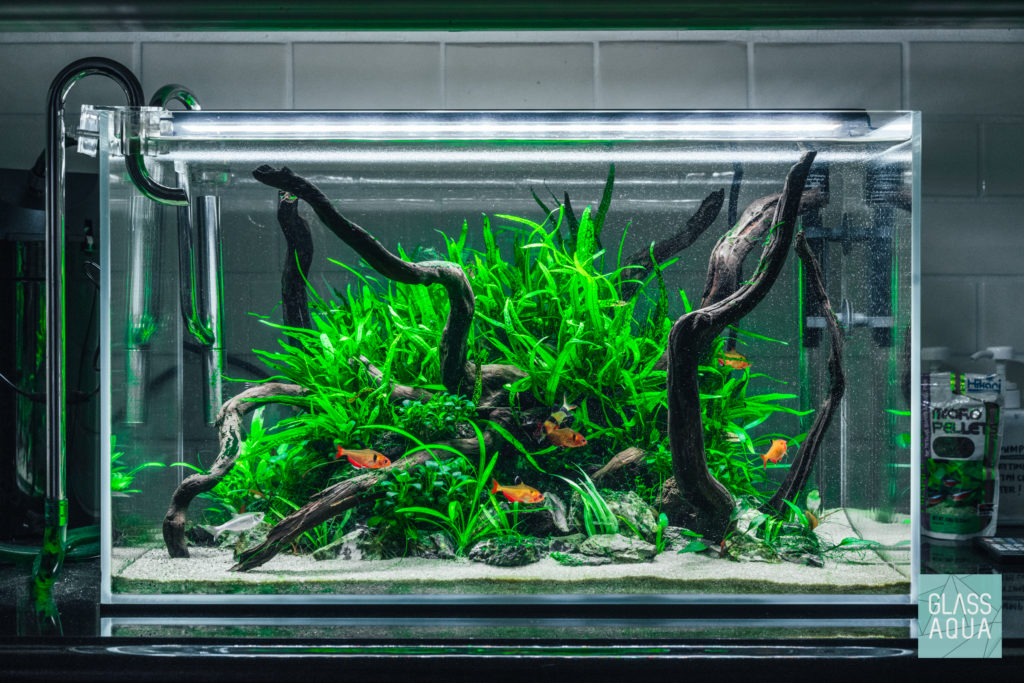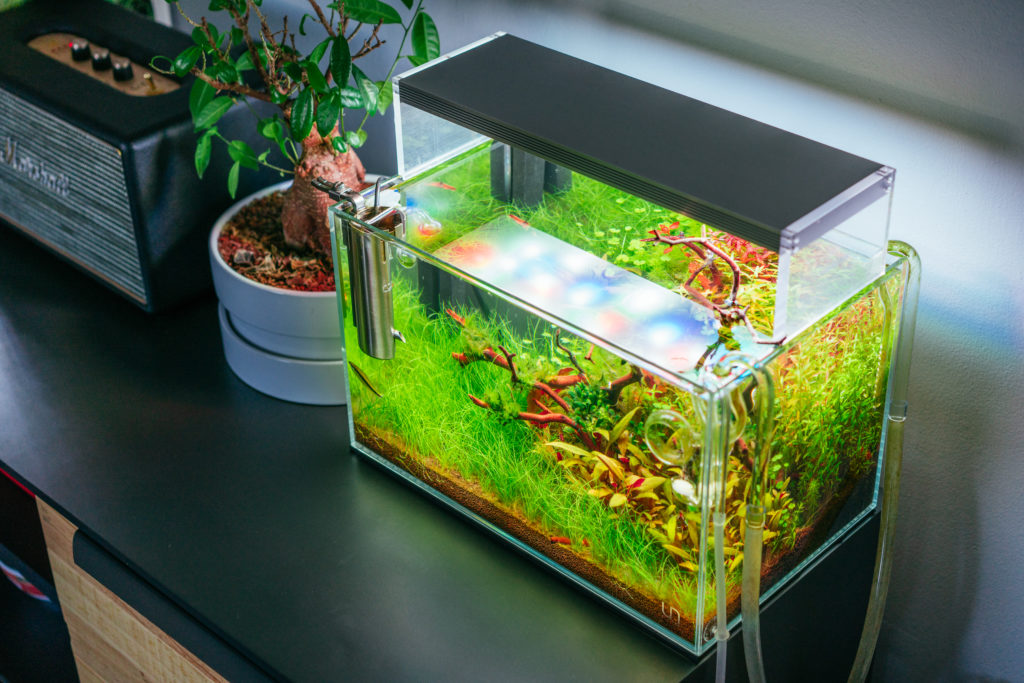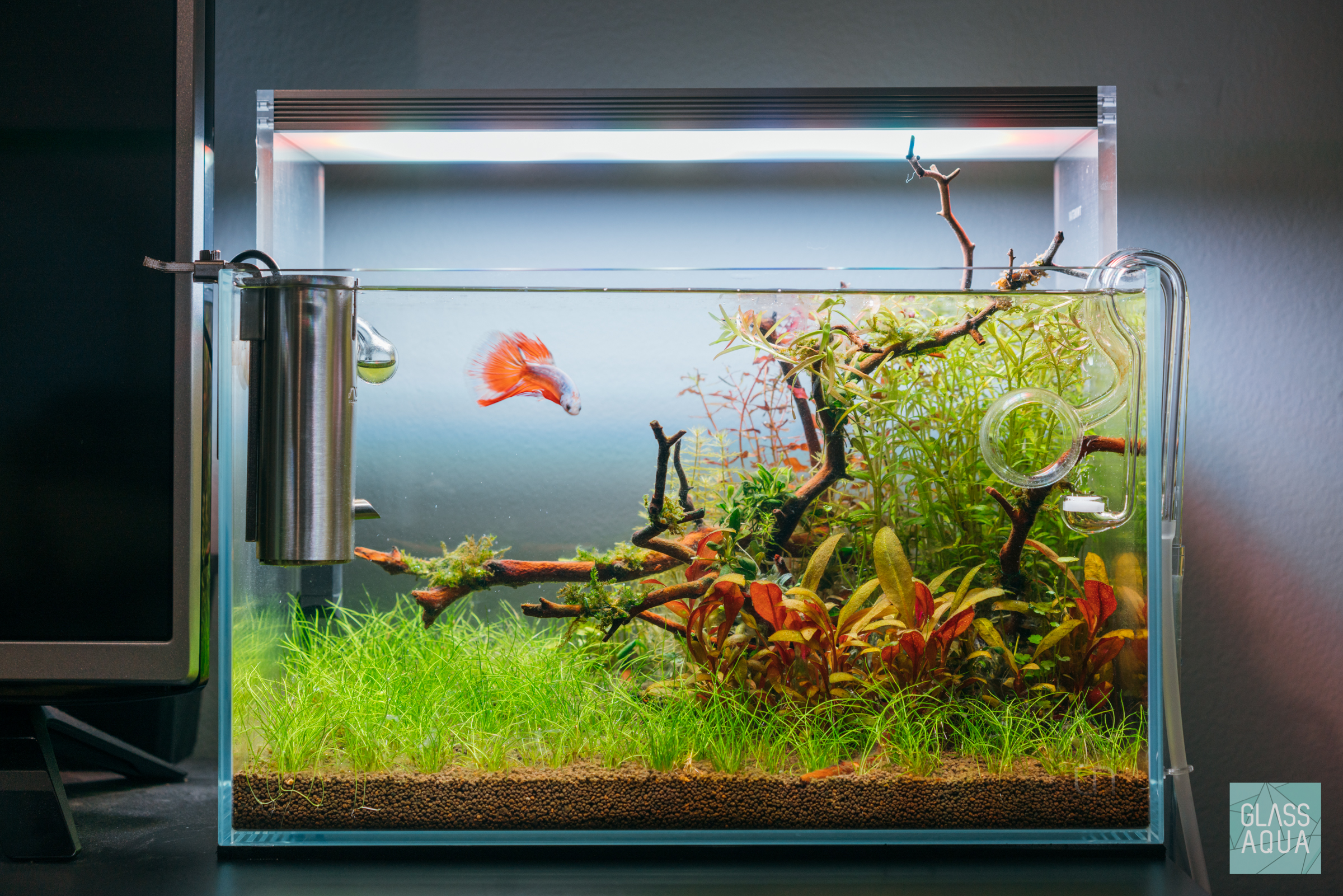Having a successful planted aquarium is not as difficult as some make it out to be. In simpler terms, there are 3 main contributing factors to keep in mind before starting a planted aquarium tank. These factors include lighting, CO2, and nutrients. ALL aquarium plants require some form of aquarium lighting, CO2, and nutrients in order to grow and thrive. It’s also important to realize that not all aquatic plants are the same. There are easy aquatic plants, intermediate aquatic plants, and advanced aquatic plants that require very particular conditions and care to grow properly. Segmentations are determined by the level of care and demands of each aquarium plant in relevance to their own specific lighting, CO2 and nutrient requirements.

With this in mind, choosing the correct planted aquarium LED light should be one of the most important decisions a planted tank enthusiast should consider. In this blog post, we’ll breakdown our favorite planted aquarium tank LED lights: Twinstar, ONF and Ultum Nature Systems Titan 1. We’ll include real life examples and tests that we have performed over the course of 8 – 12+ months on our own planted aquarium tanks.

NOTE: Just because an aquarium light “looks” brighter does not necessarily mean the fixture produces a higher light output. Looks are completely subjective and based on several factors which we will discuss below.
The Technical Jargon Explained
Before we begin, let’s cover the most common planted aquarium LED jargon and turn them into digestible bites for those who want simple explanations rather than more complicated, scientific/technical specifications:
COLOR TEMPERATURE – Color temperature of an aquarium light is one of the easiest terms to understand and is measured in Kelvins(K). Color temperature defines how warm or cool a planted aquarium LED light will appear to the human eye. This is also the most subjective specification out of the bunch. Aquarium lights that seem white and natural to some may look too warm (yellow) or cool (blue) to others. We always recommend aquarium LED lights that range from 6,500K to 12,000K. This is the optimal color temperature range for all aquarium plants to absorb.
LED TYPE – All white LED bulbs, RGB bulbs and RGB-W are the most commonly advertised forms for planted aquarium LED lights. All of these options can and will grow aquatic plants effectively. However, the RGB options are usually preferred for aquatic plants. RGB aquarium LED lights produce and provide separate Red, Green, and Blue light wavelengths for aquatic plants to readily absorb. Keep in mind that because each RGB bulb is essentially 3-in-1, these aquarium lights are typically higher in cost when compared to their white bulb LED counterparts. Different brands generally develop RGB wavelengths unique to their product that will typically be depicted by a chart such as the ones shown below by Ultum Nature Systems and ONF.

WATTS – This is a negligible specification unless energy consumption is an issue. If this is not a deciding factor, aquatic plant growth is NOT determined by wattage output and higher watts will not directly impact growth rates. Many beginner hobbyists who do a quick Google search may read about the old school “watts per gallon” rule in the planted tank hobby. However, due to more recent advances in the hobby and technology, this rule no longer holds weight and is not 100% accurate.
PAR – A new planted aquarium hobbyist may stumble upon the term PAR, PAR Data or PAR Meter. PAR is short for photosynthetic active radiation and refers to the amount of light available for aquarium plants to uptake light. Simply put, it is a measurement of available light at different depths within a planted aquarium tank. This is currently the generally accepted method of measuring the correct amount of aquarium lighting needed in a planted tank. However, keep in mind that not all brands will release PAR data as it is usually subjective and not 100% accurate (but close). Low PAR (less than 50 PAR) LED lights are perfect for easy aquatic plants such as Bucephalandra, Java Fern, Moss, Anubias, Cryptocoryne etc.

Things To Consider
Now knowing this information, choosing the right planted aquarium LED light should be based on the following factors:
Tank size – Not all aquarium tank lights will fit or be able to provide adequate lighting to every single aquarium tank size. It’s important to know what your tank dimensions are. Brands such as Twinstar denote aquarium tank sizes in their model numbers. These refer to LED light fixture length measurements in millimeters. For example:
- Twinstar 360E: 360mm = 14.17 inches
- Twinstar 600E: 600mm = 24 inches
- Twinstar 900S: 900mm = 36 inches
and so forth. This means that a Twinstar 360E: fits a UNS 5N, 600E: fits a UNS 60U and 900S: fits a UNS 90P. Keep in mind that it’s not advisable or aesthetically pleasing to try and fit a larger aquarium light on a smaller aquarium tank due to potential hazard as well as too much light output. We also provide a size guides on all our planted aquarium LED light product pages for correct reference. Below are several examples:

Budget – Having the right budget matters. More budget means more features and/or larger LED fixture. There are budget-friendly high-quality planted aquarium LED light solutions such as the Twinstar C Series LED Light. Usually, lesser budget means lesser features and not necessarily cheaper in build or quality. We would not hesitate to use or recommend a lower cost alternative if our aquatic plant choice or planted tank setup is fit for it.
Aquatic Plant Choice – As mentioned previously, there are a wide variety of aquarium plants available in this hobby. Choosing the right planted aquarium LED light is crucial to aquatic plant health and growth. Less demanding aquatic plants such as Java Ferns, Anubias, Cryptocoryne, or Bucephalandra are perfectly fine with less lighting but will also thrive in higher levels of aquarium lighting. In other words, they are fairly flexible and highly adaptable to different aquarium tank conditions. On the other hand, more demanding aquatic plants such as Rotala, Ludwigia and more are much more sensitive to lighting changes and also require higher light output to grow properly. We do our best to ensure that all our aquarium plant requirements are accurate and can be found in all our aquatic plant product pages. Below are some examples:
Features – Numerous unique features can be found in Twinstar, ONF and Ultum Nature Systems aquarium LED lights. Common features include, adjustable legs, bluetooth capabilities for phone app control, touch sensitive buttons, heat dissipation fins and suspension wires. Depending on your needs some of these features may be worth looking into.
Doubtful?
Still unsure which planted aquarium LED light is right for you? Our best suggestion would be to compare all of them. To simplify this process, we’ve compared some of the most popular Twinstar, ONF, and Ultum Nature Systems LEDs we offer below on our own tanks for reference.
17 gallon planted aquarium tank:
44 gallon planted aquarium tank:
20 gallon planted aquarium tank:
NOTE: The photos presented above were all show using the exact same manual camera settings in a closed environment. No photo edits were made in order to show true color temperature of each individual aquarium LED light unit.
We hope that this planted aquarium LED light guide will help in your next successful planted tank. Once again, we want to emphasize how important the balance of aquarium lighting, CO2, and nutrients are in creating a flourishing aquascape are. If all three are present and readily available then all that’s really needed is proper aquarium maintenance for aquarium plants to prosper.
Side note: Check out this post we wrote on the breakdown of all Twinstar LED Light fixtures.








































